The first supporting question, “what economic trends influenced farming in North Dakota prior to 1900?” helps students use primary sources to unwrap the context of the time and topic being examined. By the early 1870s, land in northern Dakota Territory was being claimed or purchased for farms by settlers from eastern states, Canada, and Europe. The Great Dakota Boom, the years from approximately 1878 to approximately 1886, was a period when the eastern two-thirds of the region was rapidly settled. The land that had once been considered too cold and dry for crops and too distant for livestock was discovered to be excellent for both. Farmers found deep rich soil for Hard Red Spring wheat in the Red River Valley and excellent grazing land for cattle from west of the Missouri River. Many farms were claimed through the Homestead Act (1862), the Timber Culture (Tree Claim) Act (1873), or Preemption Act (1841), while others were purchased from the Northern Pacific Railroad land grants or from private parties. The Northern Pacific and Great Northern Railroads transported products from farms and ranches to eastern urban markets. Many of the new settlers stayed in North Dakota, while others sold their land and moved on. A few returned to their previous homes. Complete the following task using the sources provided to build a context of the time period and topic being examined.
Formative Performance Task 1
Study sources A-J. Write a summary that answers the following questions: What types of sources are they (letters, photos, maps, diaries, etc.)? What is going on in these sources (what kind of information do they contain? Who created each of these sources? Who was the intended audience for each source? Why were these sources created? When were the sources created? What do the sources tell us about farming during the late 1800s? How do we know? What else can you find?
Featured Sources 1
The sources featured below are primary sources. They are the raw materials of history—original documents, personal records, photographs, maps, and other materials. Primary sources are the first evidence of what happened, what was thought, and what was said by people living through a moment in time. These sources are the evidence by which historians and other researchers build and defend their historical arguments, or thesis statements. When using primary sources in your lessons, invite students to use all their senses to observe, describe, and analyze the materials. What can they see, hear, feel, smell, and even taste? Draw on students’ knowledge to classify the sources into groups, to make connections between what they observe and what they already know, and to help them make logical claims about the materials that can be supported by evidence. Further research of materials and sources can either prove or disprove the students’ argument.
The letters in this section (featured sources A and B) were written by some of the people who came here to take advantage of the boom in agriculture. The two letters were sent to members of Eugene Kingsley’s family of Smithfield, Pennsylvania. One of the writers, J. Rush Holmes, lived with the Kingsleys’ in 1880 and was probably a farm laborer. Holmes may have been working for the Amenia and Sharon Land Company, a bonanza farm that hired dozens of workers to plow, plant, harvest, and thresh the wheat crop. Though Holmes saw a possible future for himself in North Dakota, he returned to Pennsylvania by 1900 and raised his family there. Another member of Eugene Kingsley’s family was his daughter DeFrantie, addressed as Frantie by her correspondent, whom we know only as Estella S. At the time of this letter, Frantie was twenty-two years old; Estella was probably near that age too. She was living near Eckelson with her family on her father’s claim. We know little about these letter writers and how they fared in life. Sources A and B are part of the Eugene G. Kingsley Letters manuscript collection (Mss 20426). Source C is part of the Dakota Territory 1885 Census Schedules series (Series 30111). Sources D-J are a series of photographs by a Richland County photographer (Tully Brown Photograph collection 00006). They show the men, steam-powered machinery, and the horses required to manage the wheat harvest around the turn of the century.
| Source A |
J. Rush Holmes’s Letter 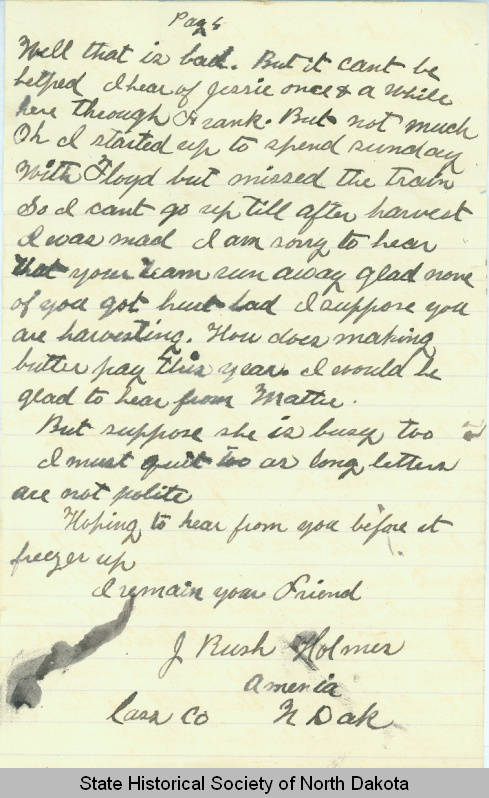
http://www.digitalhorizonsonline.org/digital/collection/uw-ndshs/id/3272 |
| Source B |
Estella’s Letter 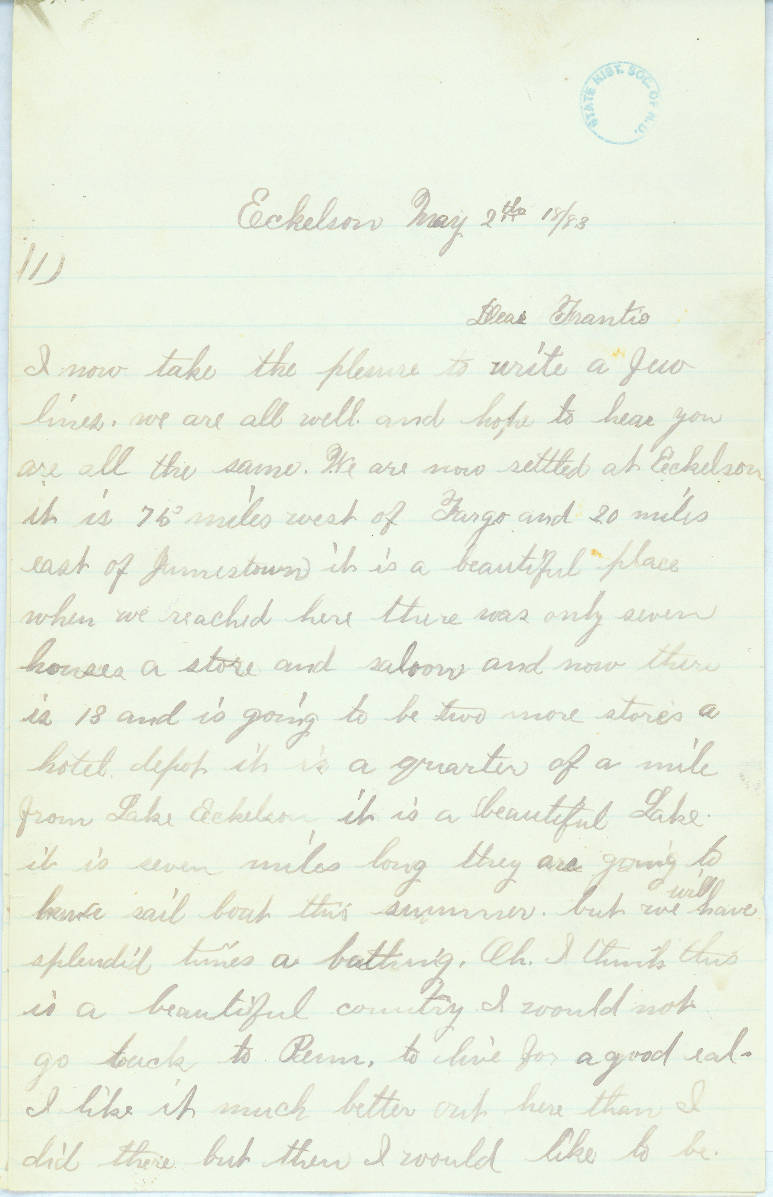
http://www.digitalhorizonsonline.org/digital/collection/uw-ndshs/id/3274 |
| Source C |
1885 Agricultural Census The United States Census is taken every ten years, but periodically the federal government conducts additional data gathering of specific topics such as agriculture. The 1885 Agricultural Census was taken right before the Great Dakota Boom of 1878-1886 ended. This was a period when the eastern two-thirds of North Dakota were rapidly being settled by American and European immigrants. The ag census is full of detailed information about land, livestock, crops, and the estimated value of agricultural production. While general statistical data is available for recent census years, the full, detailed manuscripts, containing personally identifiable information, are subject to the “72-Year Rule.” This means the personal data contained in the full census manuscripts are not released to the public until after 72 years has passed. The full manuscripts are incredibly important to researchers as they provide so much additional information beyond general statistical analysis. 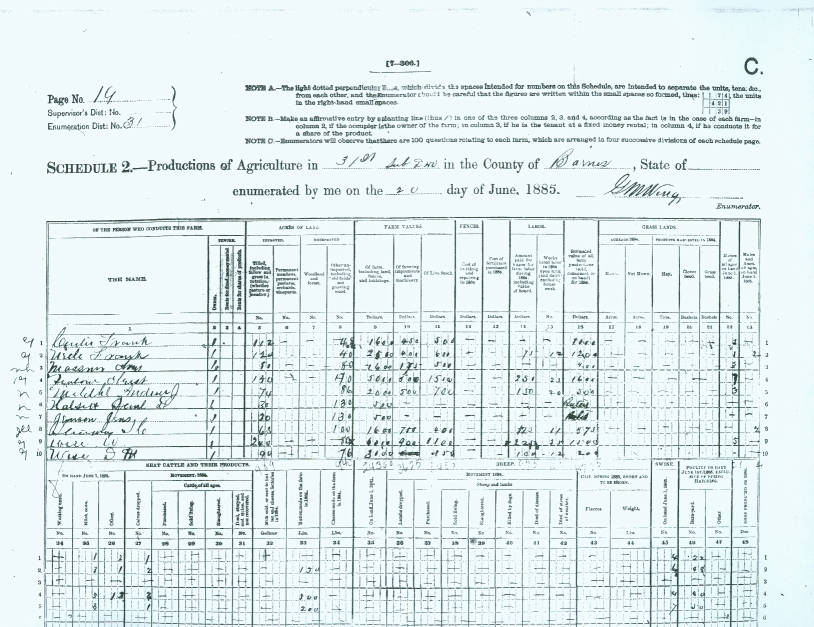
http://www.digitalhorizonsonline.org/digital/collection/uw-ndshs/id/3279/rec/1 A census-taker would fill out data sheets, writing the name of a farmer and then recording details as the farmer reported them including data about improved and unimproved land usage and acreage; values of farm buildings, implements, machinery, livestock; wages paid; acres of grassland; and the number of horses, mule sheep, lambs, or head of cattle owned by each farmer. This document is an extract from 1885 agricultural census conducted in Barnes County. The full census manuscript is available on microfilm at the Institute for Regional Studies, part of the North Dakota State University Archives in Fargo, ND. Researchers look for clues like this in primary sources to help confirm other evidence they are using. How does this document relate to Estelle’s letter? Can we infer anything from this source? Though we do not know Estella S.’s last name, we do know that her father’s farm was in Barnes County and he had two mules which were rare on Dakota Territory farms. Perhaps he was the Mr. T. C. Stevens (line 8) who appears on this page of the Barnes County census who had two mules. |
| Source D |
This series of photographs by Richland County photographer, Tully Brown, show the men, the machinery, and the horses required to manage the wheat harvest around the turn of the century. These machines were powered by steam. 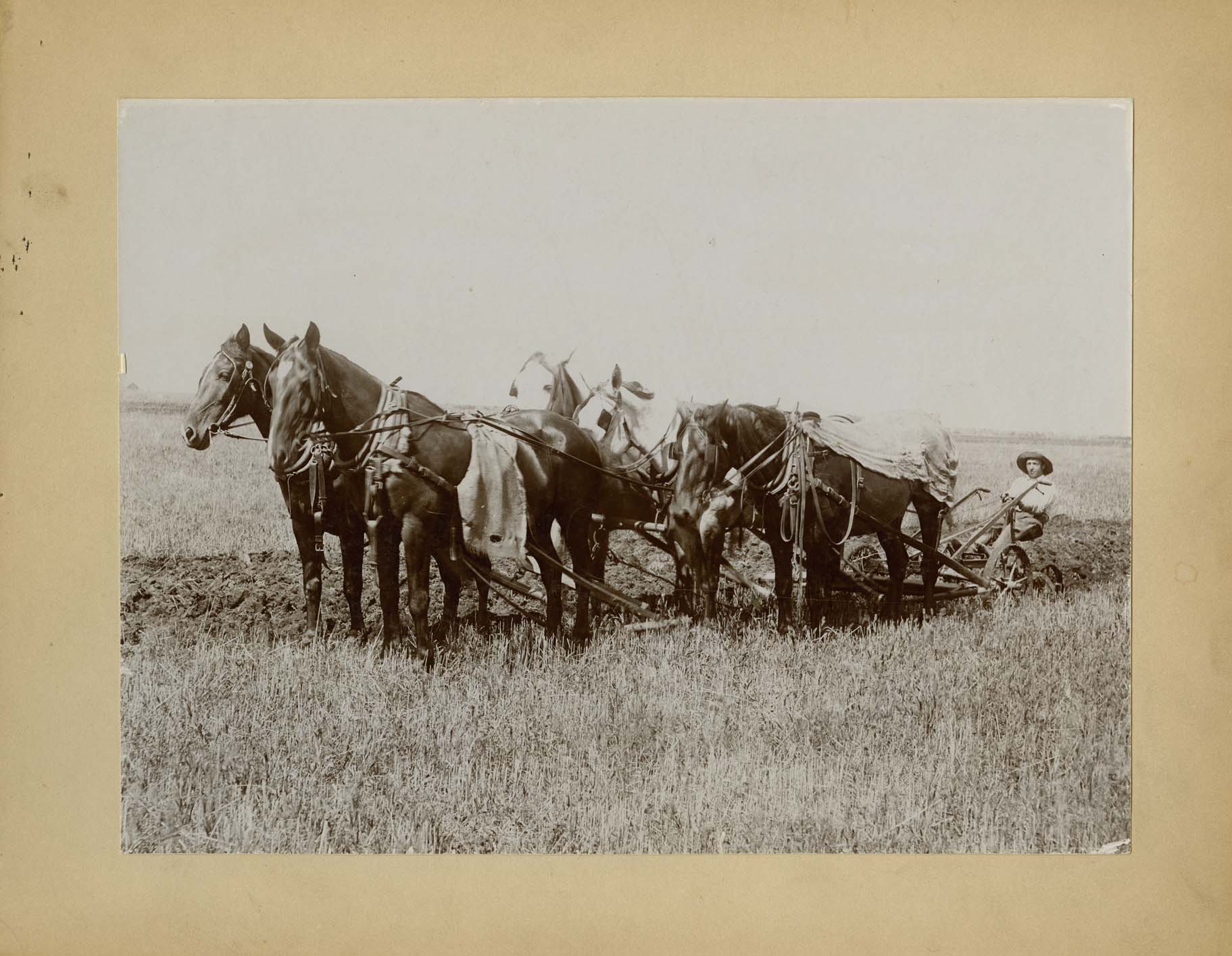
Five horse team plowing, Wahpeton, ND. |
| Source E | 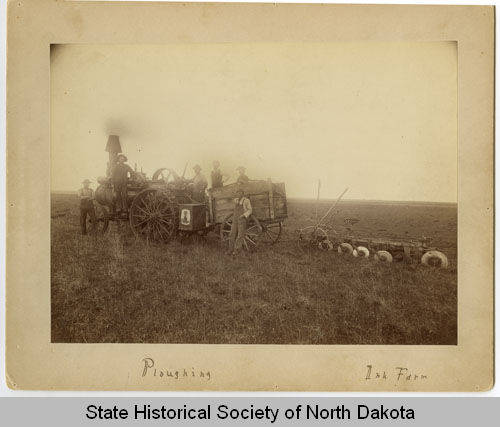
Plowing with steam-powered tractor at the Ink Farm near Wahpeton, ND http://www.digitalhorizonsonline.org/digital/collection/uw-ndshs/id/3220/ |
| Source F | 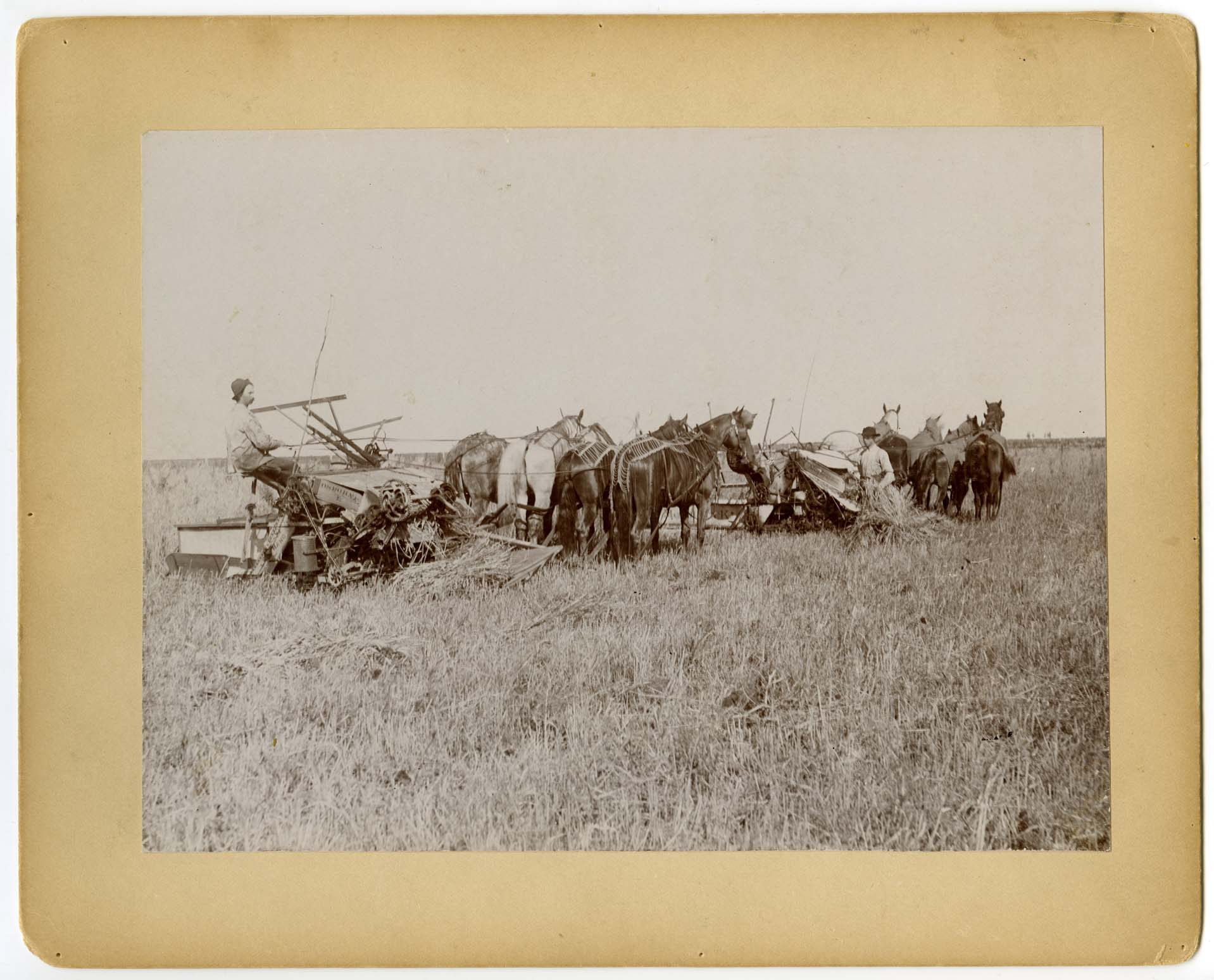
Two four-horse teams pulling reapers. |
| Source G | 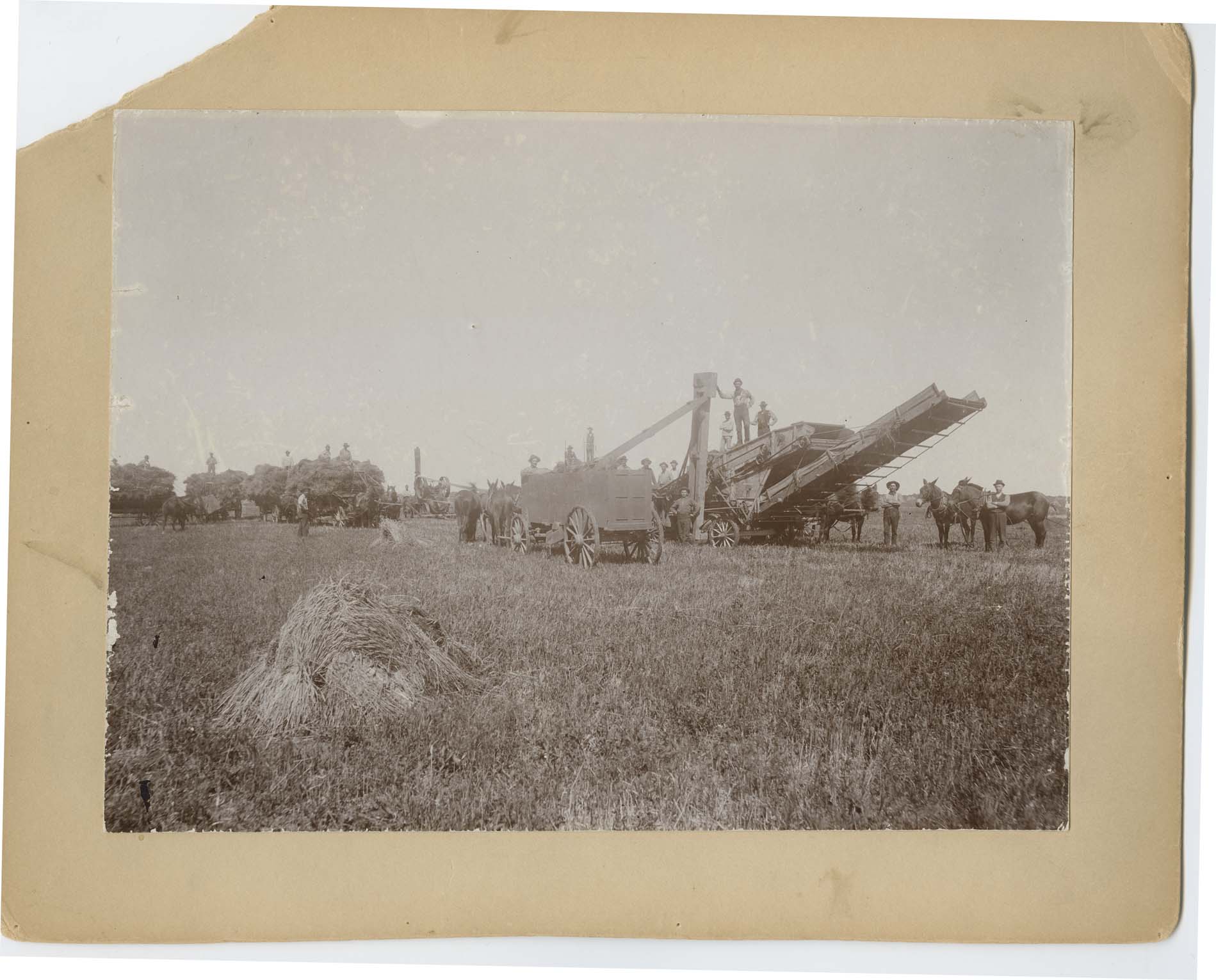
Threshing on the Dwight farm, Wahpeton, ND |
| Source H | 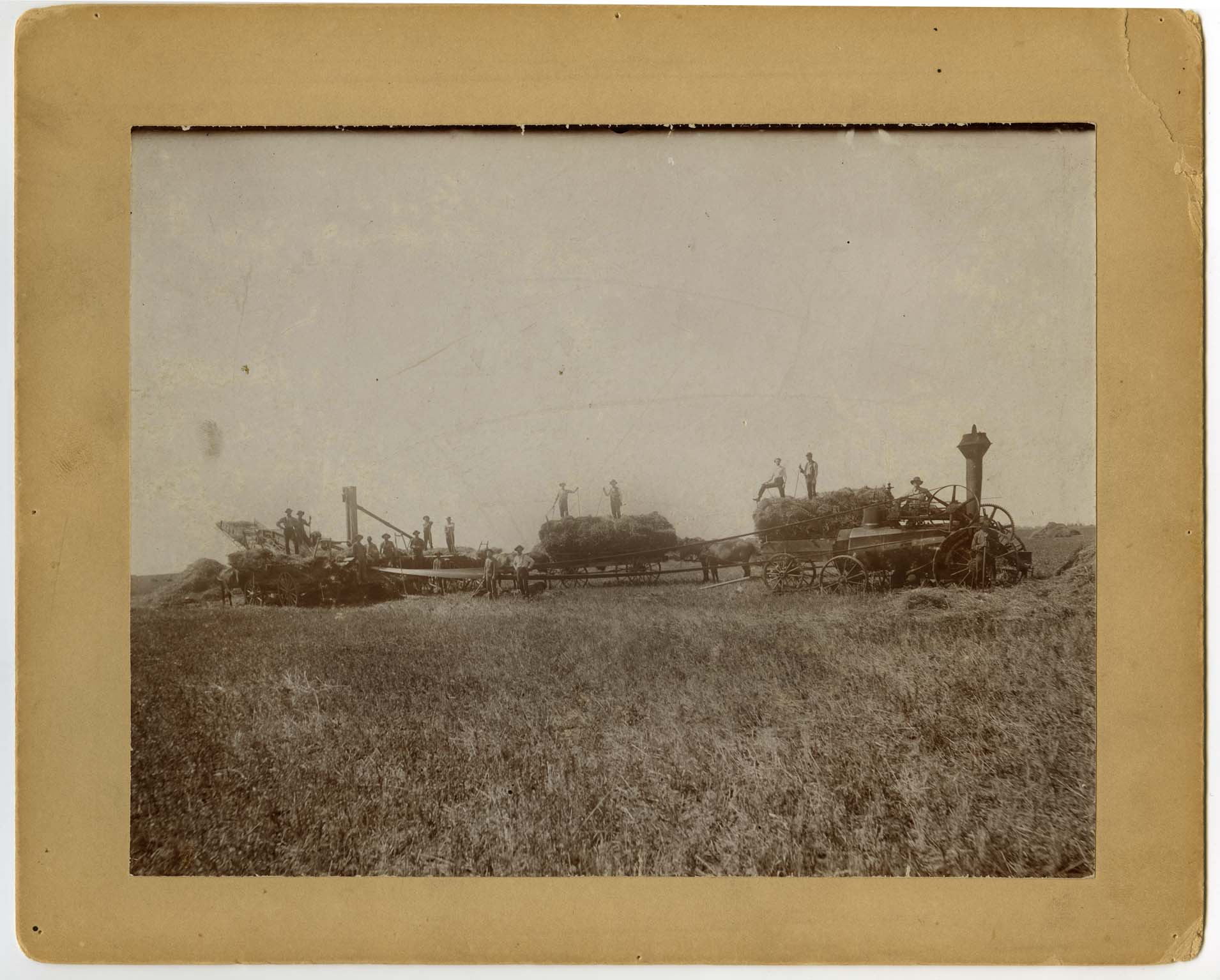
Threshing, Wahpeton, ND |
| Source I | 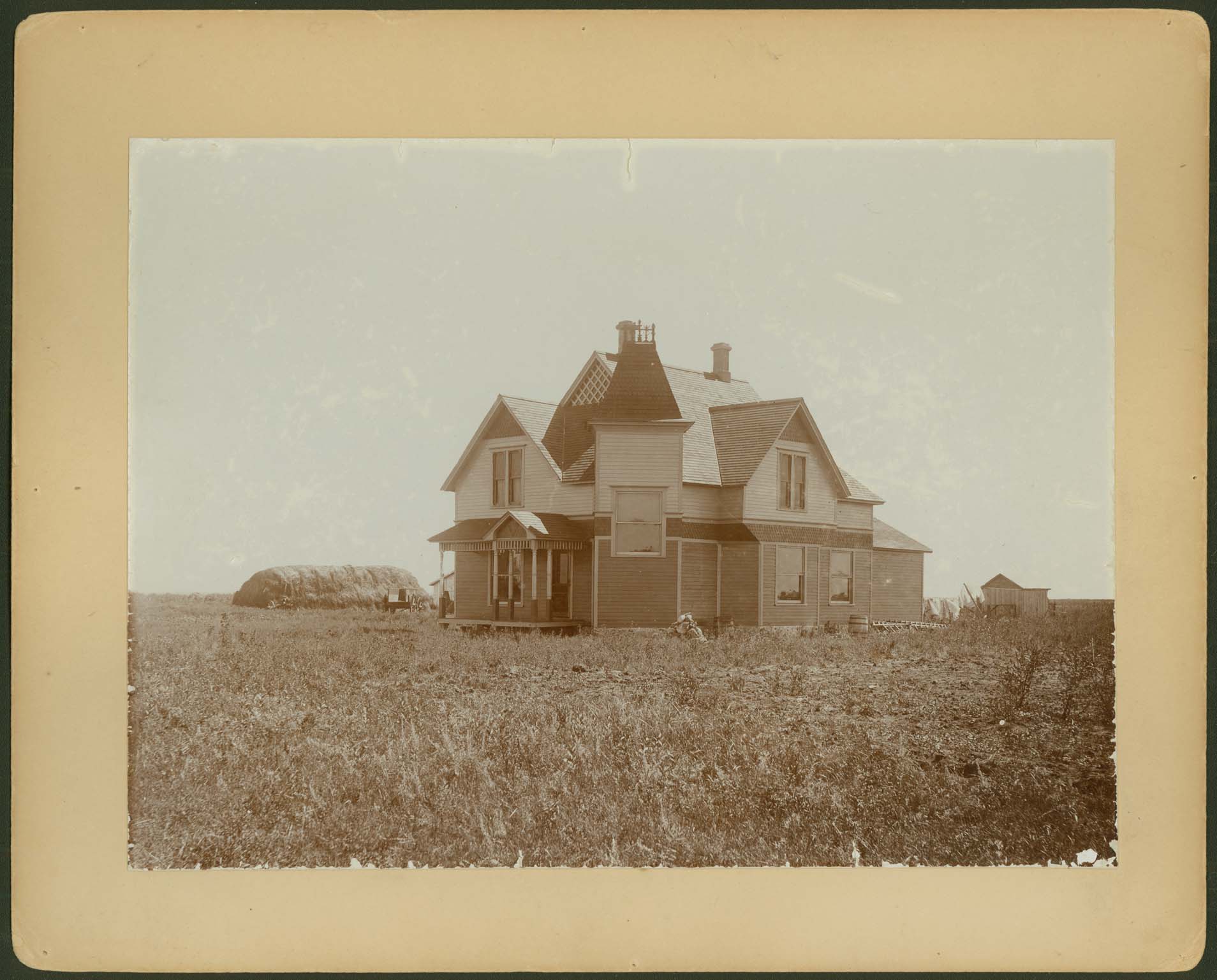
Farms in eastern North Dakota were often isolated and lacked shade trees. The style of the house, however, suggests the occupants had found a level of financial security in wheat farming. |
| Source J | 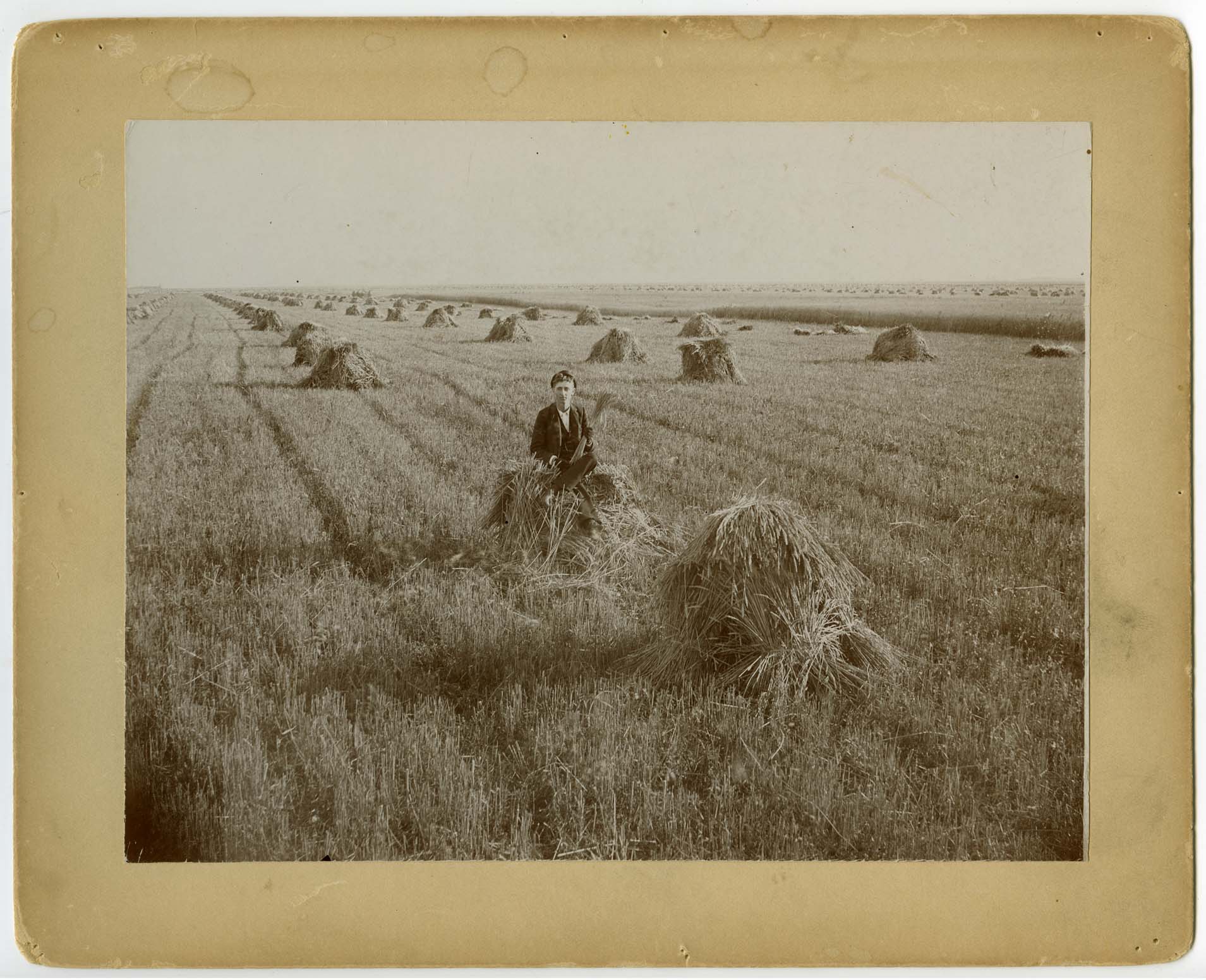
Early farm workers often remarked on the size of the wheat fields and the absence of tree stumps and other obstacles which often slowed the work of farming in eastern states. These wheat shocks await gathering for threshing. |
Learn more about the history of farming in North Dakota by visiting the North Dakota Heritage Center & State Museum or the Welk Homestead State Historic Site.


